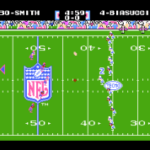Goodnight Punpun Manga, a manga masterpiece by Inio Asano, delves deep into the human psyche, exploring themes of existentialism, life, and death. This critically acclaimed series has captivated readers worldwide with its unique storytelling and profound philosophical undertones. In this article, we’ll explore how Goodnight Punpun tackles existentialism and what it reveals about the human experience.
The Essence of Existentialism in Goodnight Punpun
Goodnight Punpun is not your typical manga. It follows the life of Punpun Onodera, depicted as a bird-like character, from childhood to adulthood. The series is renowned for its raw portrayal of human emotions and the struggles of existence[1].
Existentialism, a philosophical theory that emphasizes individual existence, freedom, and choice, is at the core of Goodnight Punpun’s narrative. The manga explores how Punpun grapples with the meaninglessness of life, the burden of freedom, and the inevitability of death[2].
The Absurdity of Life
One of the key existentialist themes in Goodnight Punpun is the absurdity of life. Punpun’s journey is filled with random events and encounters that often seem meaningless or cruel. This reflects the existentialist belief that life has no inherent meaning, and it’s up to individuals to create their own purpose[3].
Life and Death in Goodnight Punpun
The manga doesn’t shy away from exploring the darker aspects of life and the omnipresence of death. Punpun’s experiences with loss, grief, and the fear of mortality are portrayed with unflinching honesty.
The Weight of Existence
Throughout the series, Punpun struggles with the weight of his own existence. His bird-like appearance, which only the reader can see, symbolizes his alienation from the world around him. This visual metaphor powerfully conveys the existential angst that many people experience in their lives[4].
The manga also delves into the concept of suicide, a topic often associated with existentialist literature. Punpun’s contemplation of ending his life reflects the existentialist idea that the ultimate freedom is the choice between life and death[5].
Relationships and Existentialism
Goodnight Punpun explores how relationships shape our existence and our understanding of life and death. Punpun’s interactions with family, friends, and romantic interests all contribute to his existential journey.
Love and Meaning
The manga presents love as both a source of meaning and a cause of suffering. Punpun’s relationship with Aiko, his childhood crush, is particularly significant. Their connection represents the human desire for connection and meaning in an otherwise meaningless universe[6].
However, the manga also shows how relationships can lead to disappointment and pain, reflecting the existentialist view that human connections are ultimately fleeting and imperfect.
Artistic Expression of Existentialism
Inio Asano’s unique artistic style plays a crucial role in conveying the existentialist themes of Goodnight Punpun. The contrast between the simplistic design of Punpun and the detailed, often gritty backgrounds creates a sense of alienation and discomfort that aligns with existentialist philosophy[7].
The manga’s surrealistic elements, such as Punpun’s conversations with God (depicted as a crude, afro-sporting photograph), further emphasize the absurdity of existence and the search for meaning in a chaotic world.
Impact on Manga Culture and Fans
Goodnight Punpun has left an indelible mark on manga culture, inspiring countless discussions, fan theories, and even academic analyses. Its unflinching exploration of existentialism has resonated with readers worldwide, particularly those grappling with their own existential questions[8].
The manga’s popularity has also sparked interest in other existentialist works in manga and anime, contributing to a growing trend of philosophical storytelling in Japanese popular culture.
The Lasting Legacy of Goodnight Punpun
goodnightpunpun.mobi stands as a testament to the power of manga to explore complex philosophical ideas. Its portrayal of existentialism, life, and death continues to captivate and challenge readers, encouraging them to confront their own existential questions.
The manga’s unflinching examination of the human condition, coupled with its unique artistic style, has cemented its place as a modern classic in the manga world. It serves as a reminder that even in the face of life’s absurdities and the inevitability of death, there is beauty and meaning to be found in our shared human experience.
As we conclude this exploration of existentialism in Goodnight Punpun, we invite you to share your own experiences with this groundbreaking manga. How has Punpun’s journey resonated with you? What insights about life and death have you gained from reading this series? Join the conversation and let’s continue to unravel the existential mysteries of Goodnight Punpun together.

































